Few things to beat astrophotography in winter. Whether you are an avid stargazer or you have an important astrology assignment to complete, the best time to see galaxies in the southern sky is during the winter, from September to January although some star systems remain clear all the way to March.
Have you ever dreamt of exploring all the 50+ constellations that litter the southern sky during the winter? Well, that would be a bit hard to accomplish in one season, but the journey could begin with knowing all the famous star systems in this zone. Read on and meet the most interesting star systems of the southern sky.
Contents
Lepus Constellation

If you can locate Orion, then you definitely can spot the Lepus constellation without any hardship – it lies on the feet of the Orion constellation. The constellation’s name is Latin for “the hare.”
Lepus is one of a few constellations not associated or mentioned in any specific myth, although it is often depicted as a fleeing hare being pursued by Orion (the mythical hunter) while other depictions show it fleeing a pack of hunting dogs (often represented by Canis Minor and Canis Major constellations). Lepus is yet another constellation cataloged by Ptolemy.
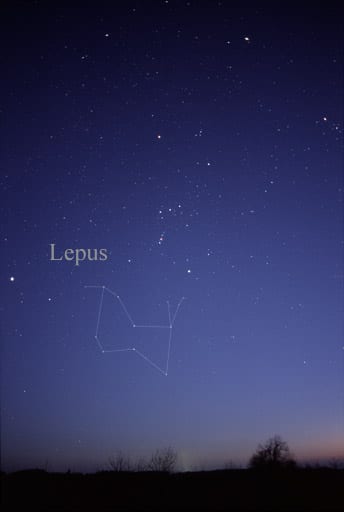
Lepus is home to several remarkable southern stars, including the famous R Leporis (a variable star, also called Hind’s Crimson Star). Some of the interesting deep-sky bodies found in this constellation are Messier 79 (or NGC 1904), Spirograph Nebula (IC 418), and the irregular galaxy NGC-1821.
Lepus is part of the Orion star system, along with the Orion constellation, Monoceros, Canis Major, and Canis Minor.
Find the Lepus constellation in the 2nd quadrant (SQ2) of the northern sky between latitudes +63 degrees and -90 degrees. Other notable neighboring constellations are Orion, Monoceros, Eridanus, Columba, Caelum, and Canis Major.
Canis Major
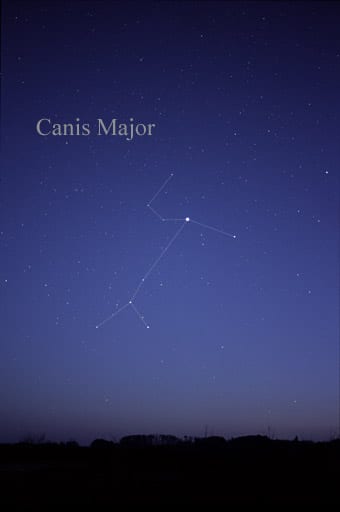
In Latin, Canis Major translates to “the greater dog” which helps explain why this constellation resembles a dog facing up. Right above the head of the “dog” lies the Lepus constellation. The two constellations, therefore, depicts a dog pursuing a hare. Sirius is the brightest star in this constellation (and also in the whole sky) and forms the neck of the “dog.”
It is worth mentioning that Canis Major is part of the greater Orion family of southern constellations, alongside Canis Minor, Monoceros, Lepus, and Orion (Orion can be observed from almost anywhere though).
Canis Minor
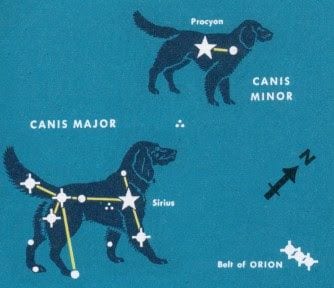
Canis Minor can be seen on the top left of the Canis Major constellation. The brightest star in this constellation is Procyon, which is the next brightest spot on the top left of Sirius (the main star in Canis Major).
Its Latin name means “the lesser dog” or “smaller dog” probably because it is a less brilliant neighbor of Canis Major.
Alongside Canis Major, they are depicted in Greek mythology to trail behind the Orion constellation (the hunter). Both constellations were cataloged by Ptolemy.
Canis Minor holds a few interesting stars and galaxies: Procyon is one of the south’s brightest stars, Luyten’s Star is among the stars closest to Earth, while the spiral galaxy NGC-2485 is a notable object in this star system.
Auriga

Auriga in Latin means “the charioteer.” It is named so because all of its major stars form the shape of a pointed helmet that was used by charioteers in medieval eras. Auriga was first recorded by Ptolemy in Almagest in the 2nd century CE.
This constellation contains Capella, which is the sixth most brilliant star in the southern sky. It’s also the location of the renowned galactic anti-center (a point in the space directly opposite to the middle section of our Milky Way Galaxy).
Auriga is home to a few other interesting deep space objects, including Messi, a collection of open star clusters.
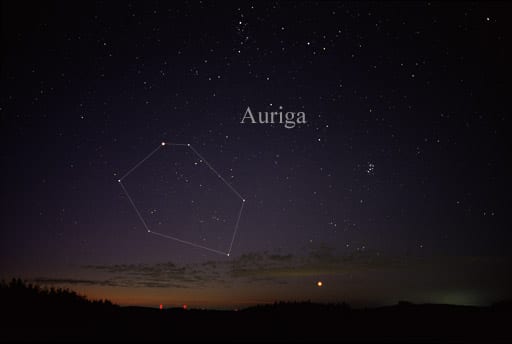
The constellation is part of the expansive Perseus family of star systems, together with Andromeda, Lacerta, Pegasus, Perseus, Cassiopeia, Cepheus, Cetus, and Triangulum.
The neighboring star systems are Camelopardalis, Lynx, Perseus, Gemini, and Taurus.
Alpha Centauri
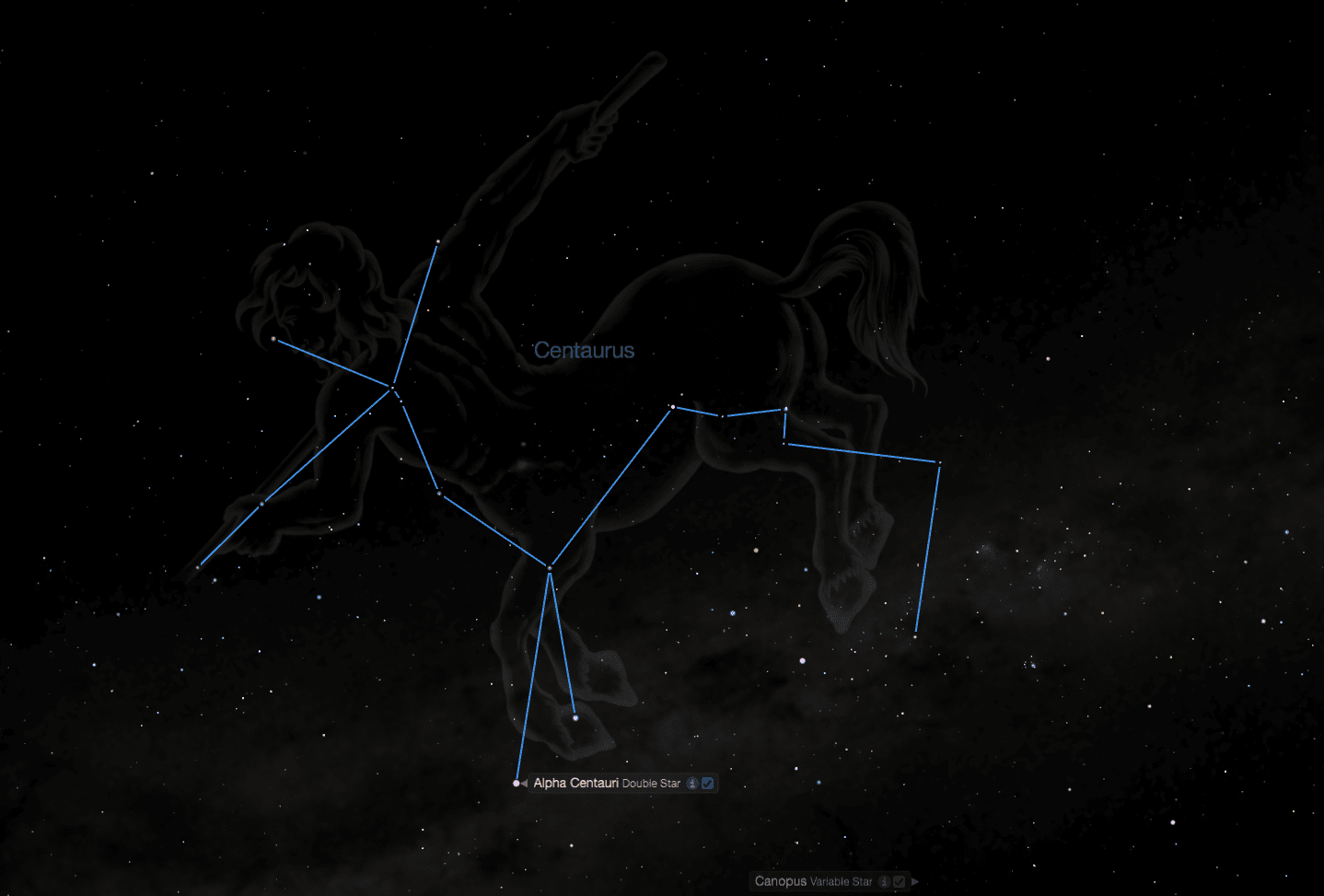
Very close to Alpha Centauri is an equally bright visual neighbor – Beta Centauri – which is actually about 390 light-years from the former! These two are what you will see with your telescope (they are so bright yet “close together” – about 10000 brighter than the sun – that they appear like a single star when observed with a naked eye).
However, there’s another tiny hard-to-see partner nearby, referred to as Proxima Centauri. These three collectively form a three-star constellation often referred to as Southern Pointers because, if you look at them, they point straight to the Southern Cross, also known as Crux.
Did you know Alpha Centauri is the closest planetary system and star system to our solar system? It is a mere 4.3 light-years from our sun?
Once you locate this constellation, you can never forget it.
Crux (Southern Cross)

There’s a chance you have already heard of the Southern Cross because it is one of the most renowned southern sights you will see. It appears surprisingly tiny for first-timers.
It is can also be missed quite easily (there is a bigger False Cross close to it).
To locate it, navigate from Alpha Centauri heading to Beta Centauri. Thereafter, go thrice the distance between these two stars and you will arrive at Gacrux (a giant star above the cross)
Keep sweeping your binoculars around this area and you will see several stunning star clusters. The best thing is that they form an easily recognizable upright cross.
Jewel Box cluster
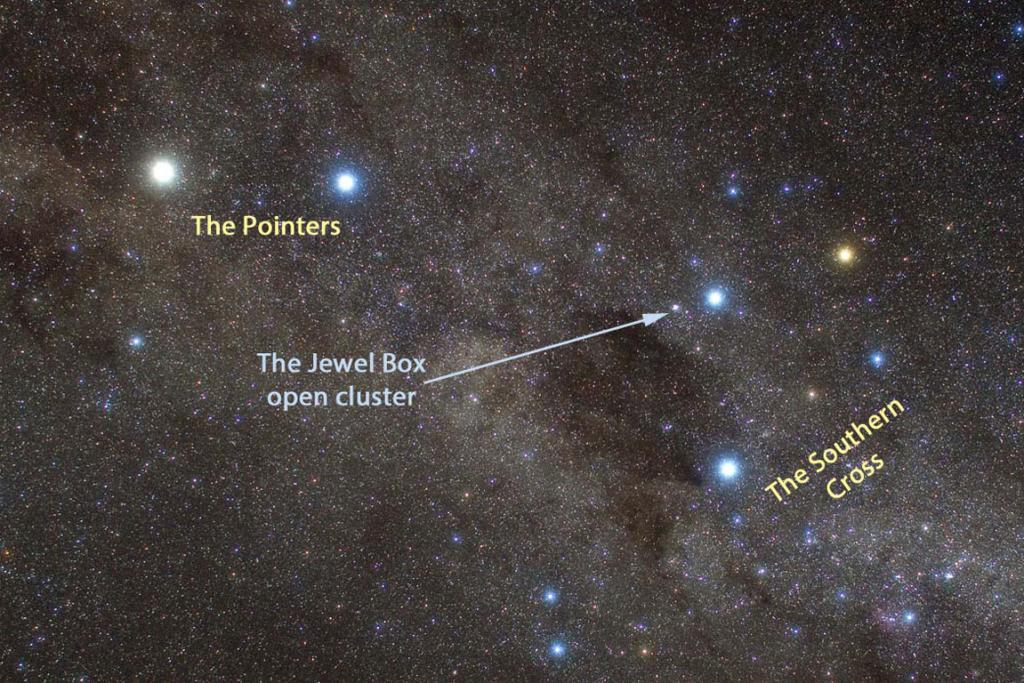
This is the constellation for binoculars or a small telescope; it’s too faint for an unaided eye.
If you are a huge fan of the famous Perseus Double Cluster constellation in the north, you will instantly love gazing at the Jewel Box (designated as NGC 4755). It is a bright open cluster near Becrux and Gacrux within the Southern Cross.
When observed through binoculars, it appears like four stars, but a telescope is able to reveal about 100 stars that sparkle blue and red.
Coalsack Nebula
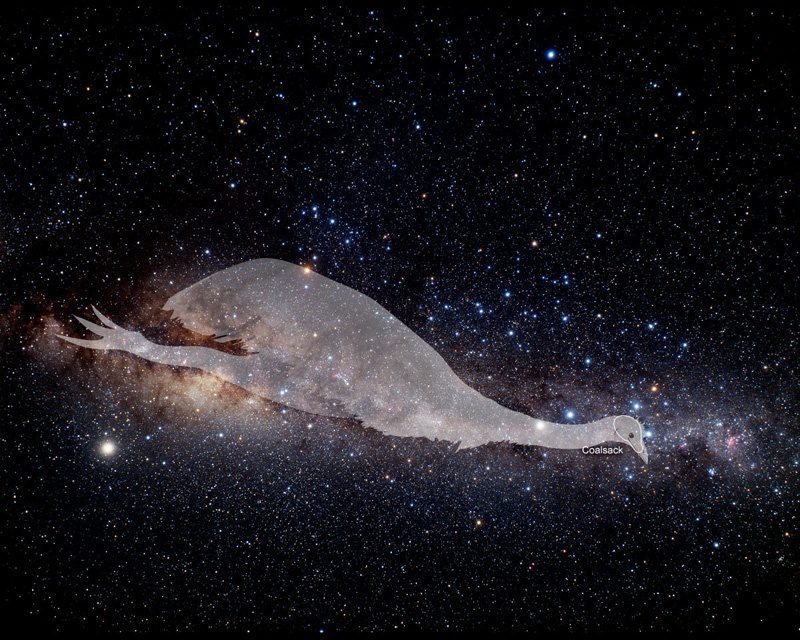
As the name suggests, this isn’t a real constellation but rather, a dust cloud lit by a brilliant hue from nearby stars to give it the characteristic coalsack appearance. It’s a spectacular formation and an interesting spot to look at, that’s why it’s on this list.
So where is it? Look beneath the previously mentioned Jewel Box Cluster. You will spot a dark band that runs across our Milky Way (which is supposed to be obvious if you are under a very dark sky).
This constellation is just 600 light-years away and often blocks the light emanating from stars behind it.
The stars observable ‘within’ – only visible with the aid of binoculars – are actually closer to our solar system than the Coalsack Nebula itself.
Canopus

Canopus is considered to be (and can be seen as) a visual bigger sibling to Sirius. It is also referred to as the South’s Great Star. It is a lone star rather than a constellation.
What makes Canopus an outstanding star in the south is its brightness – it is the second most brilliant star in the night sky behind Sirius. In fact, it is located just 40 degrees beneath the brighter Sirius. This makes it hard to spot from the northern hemisphere and quite easy in equatorial latitudes. These two stars are normally seen together from anywhere in the southern hemisphere.
Don’t let this closeness deceive you though – Sirius is actually 8.7 light-years from our Solar System, while Canopus is further away at 313 light-years from us, but an incredible 65 times bigger than the Sun!
Antares (Alpha Scorpii)
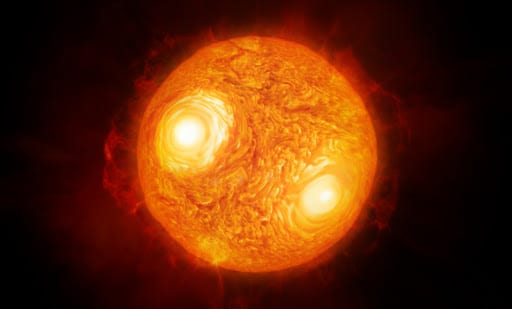
Antares is a lone star rather than a constellation but has navigational significance when it comes to the identification of the Scorpus constellation, an important constellation we’ll discuss in the next section. Even the most experienced stargazers locate Antares first before setting out for the Corpus constellation. As you will realize, this star forms the brightest middle-top part of the Corpus constellation.
Having swollen into a red supergiant “lately,” Antares is on its deathbed and will collapse into a supernova in the near future. If you spot a brilliant red dot in your telescope above the southern sky, that’s likely to be it! You will still need more proof though.
Scorpius
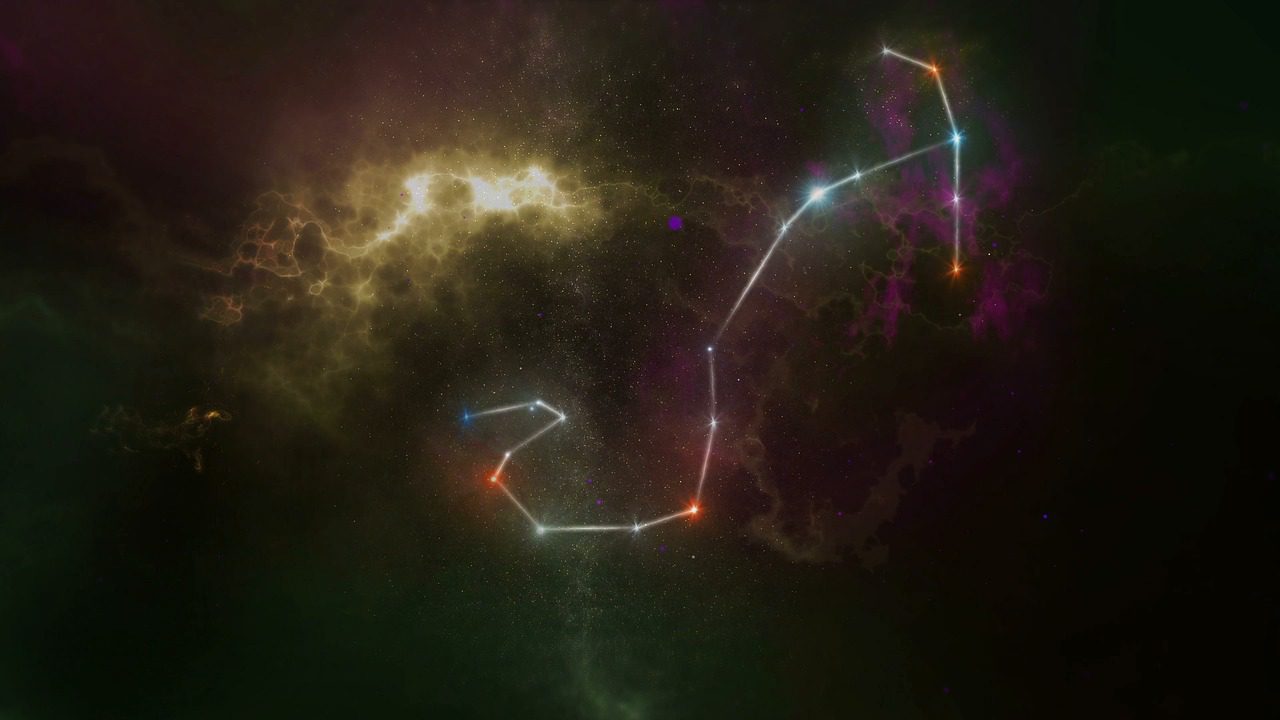
The Scorpius constellation resembles a scorpion with a poisonous tail at the bottom slightly bent to the left. All the prominent stars in this constellation are remarkably bright although Antares shines brighter than the rest. Antares forms the heard of the scorpion.
Perhaps the easiest way to locate Scorpius is by locating Antares first. With Antares clearly shining before your eyes, you can make it the head and start drawing the tail from downward then the turn left – there, you have Scorpius! Don’t forget the claws forming a U above Antares.
By the way, if you are having a hard time drawing and distinguishing star systems in the southern hemisphere, download the Stellarium Software to assist you with making precise markings.
Triangulum Australe (The Southern Triangle)

Never confuse this constellation with the similarly named Triangulum constellation found in the northern hemisphere. The major difference is the orange-hued star named Atria that dominates Triangulum Australe – it also happens to be the brightest star in this constellation. You need Alpha (or Atria), Betria (or Beta), and Gatria (also Gamma) to complete the triangle. It is just 0.27 percent of the southern sky. There’s no mythology linked with it! (that’s probably because it is a “new” constellation).
While Triangulum Australe may look boring to the stargazer’s eye, it was an important tool for the old world explorers and navigators.
Being the 83rd constellation in size and occupying an area of about 110 square degrees, it can take you some time to locate. It is situated in the 3rd quadrant/block of the southern sky (SQ3) and can be spotted between latitudes +25 degrees and -90 degrees. The neighboring southern constellations are Apus, Ara, Norma, and Circinus.
Crux (Southern Cross)

The Southern Cross is one of the smallest constellations of the southern sky, occupying only 0.165 percent of the region. It is also one of the easiest star systems to distinguish in a clear southern sky. It depicts a cross made up of four ‘stars’ (Acrux, the bottom star is actually an independent star system of six close stars, three of which can be seen through an optical telescope)
The Jewel Box Constellation is slightly on the left of Cruz, meaning, if you locate the Jewel Box first, all you need to do is search for a cross on the right-hand side.
Thanks to the stunning brilliance of the constituent stars, more so Acrux, it is one of a fistful of constellations that remains clearly visible throughout the year. It is also easier to spot –just look up in the southern sky and then suddenly Cruz appears.
Acrux, the bottommost star system, is represented in our culture on several national flags: Brazil, Australia, Papua New Guinea, New Zealand, and Samoa.
Sculptor
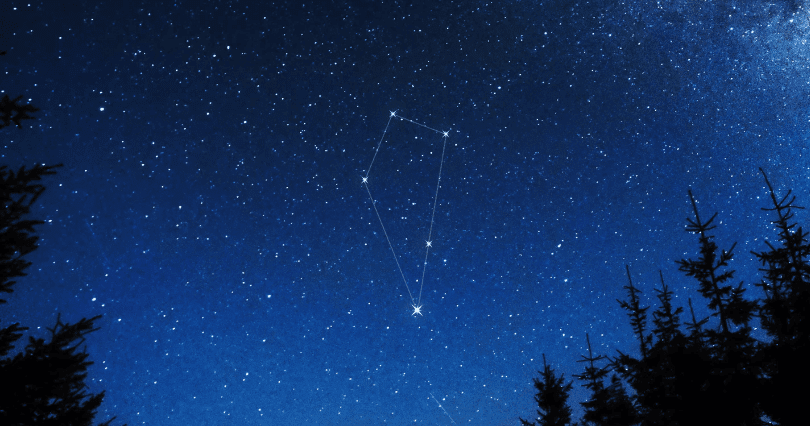
The Sculptor constellation represents the sculptor’s studio. It is easily observable in the southern hemisphere, on the south of Cetus and Aquarius.
This constellation is among a group of the southern star systems cataloged in the late 18th century by Nicolas Louis de Lacailles, a French astronomer. Initially, Lacaille called it Apparatus Sculptoris, meaning “the sculptor’s studio.” Today, the name is simply shortened to Sculptor.
It is a faint constellation made up of stars with brightness not more than 3rd magnitude. It’s the home of the Cartwheel Galaxy and the south galactic pole among other interesting deep-sky bodies.
To locate the Sculptor constellation, navigate quadrant 1 of the southern sky (SQ1), then move to between latitudes +50 degrees and -90 degrees – there’s Sculptor right there!
A few notable constellations float nearby and include Aquarius, Cetus, Piscis, Austrinus, Fornax, Grus, and Phoenix.
The sculptor is a member of the Lacaille family of star systems, along with Antlia, Octans, Pictor, Reticulum, Caelum, Circinus, Fornax, Mensa, Microscopium, Norma, Horologium, and Telescopium.
Hydra
Hydra (or the water snake) can be seen stretched across 102.5 degrees in the southern hemisphere. It is one of the largest star systems in the southern hemisphere sky.
Hydra’s head dips in the south of the Cancer constellation while the tail pokes in the middle of the Libra and Centaurus constellations. It is one of the oldest constellations ever cataloged, having been first identified in the 2nd century by Ptolemy. It represents the famous Lernaean Hydra of Heracle’s Twelve Labours, a Greek myth. Sometimes it is thought to represent the fabled water snake of Apollo and the Crow myth.
Close to Hydra are a few other notable deep space objects of astronomical value. They include the open cluster (or Messier 48), the globular cluster (or Messier 68), Ghost of Jupiter (a nebula), Southern Pinwheel Galaxy (or Messier 83), the Porpoise Galaxy (or NGC 2936), the Hydra Cluster of numerous galaxies, the spiral galaxy of ESO 510-G13, and Tombaugh’s Globular Cluster (or NGC 5694).
With a total of 88 constellations within its cluster and occupying an incredible 1303 square degrees of the sky, Hydra is the largest constellation yet.
You will find Hydra in the 2nd quadrant between latitudes +54 degrees and -83 degrees.
Nearby important constellations are Antlia, Canis Minor, Centaurus, Cancer, Corvus, Crater, Leo, Puppis, Pyxis, Sextans Libra, Lupus, Monoceros, and Virgo.
Hydra is part of the extended Hercules family of star systems, along with Aquila, Corona Australis, Ara, Centaurus, Corvus, Crater, Crux, Lyra, Ophiuchus, Sagitta, Cygnus, Hercules, Lupus, Scutum, Sextans, Serpens, Australe, Triangulum, and Vulpecula.
Crater
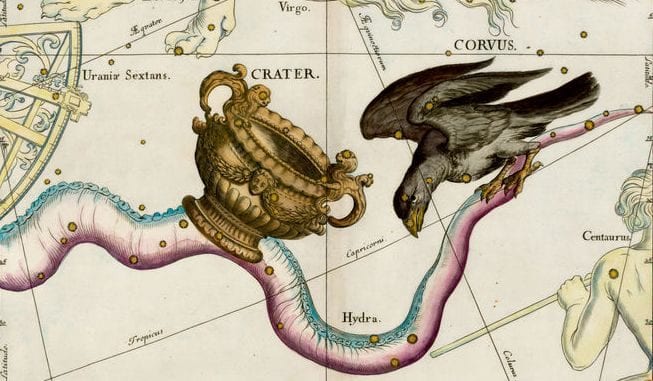
The crater is among the 48 ancient Greek constellations listed by Claudius Ptolemy in Almages, an astronomy manuscript he wrote. In mythology, it represents the cup of Apollo, (crater, in Latin, translates to “the cup”). This constellation is relatively faint, something that makes it a bit hard to locate at times. No star in this system shines brighter than the 4th magnitude.
A few notable deep space objects can be observed nearby. A big part of the galaxies found within the Crater constellation is a mere magnitude 12, sometimes fainter. One of these galaxies is Crater 2 (a dwarf galaxy). This is the 4th largest dwarf galaxy in the Milky Way. Because of the low surface brightness, it often goes undetected for years – it actually has been invisible in the recent past up to April 2016.
Find this constellation in the 2nd quadrant (SQ2) of the southern sky. It can be easily spotted at latitudes between +65 degrees and -90 degrees.
Notable neighboring constellations are Virgo, Sextans, Leo, Hydra, and Corvus.
The crater constellation is part of the larger Hercules family of star systems, along with Centaurus, Corona Australis, Aquila, Ara, Corvus, Crux, Cygnus, Lupus, Lyra, Hercules, Hydra, Ophiuchus, Sagitta, Scutum Triangulum Australe, Sextans, Serpens, and Vulpecula.
Aquarius Constellation

Aquarius constellation resembles water pouring out of a vessel. The name Aquarius actually means “the cupbearer” (“water bearer”). You have probably encountered Aquarius through Zodiac.
Aquarius is found in a unique region of the southern sky called the sea because most of the constellations in this zone are named after things related to water; Cetus (the whale), Eridanus (the river), and Pisces (the fish).
It is made up of 11 identifiable stars. Those with the names that have been approved by IAU (the International Astronomical Union) are Bunda, Lionrock, Márohu, Albali, Ancha, Bosona, Sadachbia, Sadalmelik, Situla, Sadalsuud, and Skat.
Like other zodiac members of the constellations, Aquarius was identified and cataloged by Ptolemy.
This constellation contains the famed supergiant stars Sadalmelik (Alpha Aquarii) and Sadalsuud (Beta Aquarii) plus a few other notable deep space objects: the asterism (or Messier 73) the globular clusters Messier 72 and Messier 2, the Aquarius Dwarf Galaxies, Atoms of Peace Galaxy (or NGC 7252) and two famous nebulae: Helix and Saturn Nebula.
Find Aquarius in the 4th quadrant (SQ4) of the southern sky between latitudes +65 degrees and -90 degrees.
The neighboring constellations of astronomical significance are Delphinus, Equuleus, Pegasus, Aquila, Capricornus, Cetus, Pisces, Sculptor, and Piscis Austrinus.
Capricornus constellation

Capricornus is yet another faint zodiac constellation observable in the southern sky. The name Capricornus is Latin for “the goat” – the constellation forms a charging sea-goat (without hind legs). Capricornus was first described and cataloged by Claudius Ptolemy and dully recorded in the Almagest in the 2nd century CE. The charging sea-goat was derived from the mythical creature associated with the god Enki in Babylonian mythology, although it was later adopted in Greek mythology to be a close associate of Pan. In Greek mythology, Capricornus is linked with Pan, the deity of the wild. The Association of Capricornus and the goat Amalthea is documented in Greek mythology as well.
Myths aside, the Capricornus star system is home to Alpha Capricorni (Algedi), the eclipsing binary star system Delta Capricorni (or Deneb Algedi), the white supergiant Nashira (or Gamma Capricorni), and the multi-star Beta Capricorni (or Dabih).
Notable deep space objects in this constellation include the compact galaxy group HCG-87, Palomar 12, and globular clusters Messier 30.
Capricornus can be easily located using the brightest stars in the constellations: Pegasus, Piscis Austrinus, Aquila, and Sagittarius. But since these starts are very faint from Earth, you will need exceptionally clear weather to locate see them.
Here is a list of the 50+ constellations identifiable in the southern sky at different times during the winter.
Constellation Locations
Caelum SQ1
Cetus SQ1
Columba SQ1
Dorado SQ1
Eridanus SQ1
Fornax SQ1
Horologium SQ1
Hydrus SQ1
Lepus SQ1
Mensa SQ1
Phoenix SQ1
Pictor SQ1
Reticulum SQ1
Sculptor SQ1
Antlia SQ2
Canis Major SQ2
Carina SQ2
Chamaeleon SQ2
Crater SQ2
Hydra SQ2
Puppis SQ2
Pyxis SQ2
Sextans SQ2
Vela SQ2
Volans SQ2
Apus SQ3
Ara SQ3
Centaurus SQ3
Circinus SQ3
Corvus SQ3
Crux SQ3
Libra SQ3
Lupus SQ3
Musca SQ3
Norma SQ3
Ophiuchus SQ3
Scorpius SQ3
Triangulum Australe SQ3
Virgo SQ3
Aquarius SQ4
Capricornus SQ4
Corona Australis SQ4
Grus SQ4
Indus SQ4
Microscopium SQ4
Octans SQ4
Pavo SQ4
Piscis Austrinus SQ4
Sagittarius SQ4
Scutum SQ4
Telescopium SQ4
Tucana SQ4

